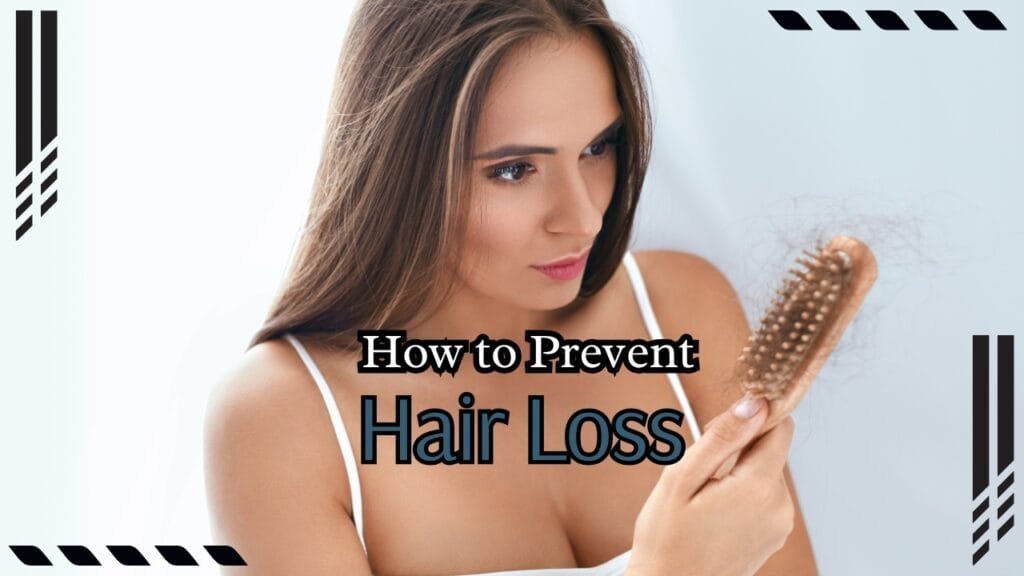Hair Loss is a concern for millions worldwide, affecting both men and women. While it’s natural to shed some hair daily, excessive hair loss can lead to thinning, baldness, and diminished self-confidence. This comprehensive guide explores the causes of hair loss, preventive strategies, medical interventions, and natural remedies, empowering you to maintain strong and healthy hair.
Introduction
Hair loss prevention is a journey that involves understanding its root causes, adopting healthier habits, and utilizing effective treatments. Whether it’s due to genetics, lifestyle, or external factors, taking proactive steps can significantly slow or even stop hair loss.
Understanding Hair Loss
What is Hair Loss?
Hair loss, or alopecia, refers to the thinning or complete loss of hair in areas where it typically grows. It may manifest as gradual thinning, patchy bald spots, or excessive hair shedding.
Common Causes of Hair Loss
- Genetic Factors: Hereditary conditions like androgenetic alopecia cause hair loss in both genders.
- Hormonal Changes: Conditions like pregnancy, menopause, or thyroid issues can affect hair growth cycles.
- Medical Conditions: Disorders such as alopecia areata, scalp infections, or chronic illnesses may lead to hair loss.
- Lifestyle Influences: Poor diet, stress, and damaging hair treatments can weaken hair and follicles.
Preventive Measures for Hair Loss
1. Diet and Nutrition
A balanced diet rich in essential nutrients is key to maintaining healthy hair.
Essential Vitamins and Minerals for Hair Health
- Biotin (Vitamin B7): Supports keratin production and strengthens hair.
- Iron: Prevents hair thinning caused by anemia.
- Zinc: Maintains oil glands around hair follicles.
- Vitamin D: Encourages follicle health and reduces shedding.
Foods That Promote Hair Growth
- Protein-rich foods: Eggs, lean meat, and beans provide building blocks for hair.
- Omega-3 fatty acids: Found in fish, nuts, and flaxseeds, they nourish the scalp.
- Leafy greens: Spinach and kale supply iron and vitamins for strong hair.
2. Hair Care Practices
Gentle Hair Handling Techniques
- Avoid over-brushing or using harsh combs on wet hair.
- Use wide-tooth combs to minimize breakage.
- Limit heat-styling tools like blow dryers and flat irons.
Avoiding Harmful Hairstyles and Treatments
- Refrain from tight hairstyles like ponytails or braids that cause traction alopecia.
- Minimize chemical treatments such as bleaching or perming.
3. Scalp Care
Importance of a Healthy Scalp
The scalp provides the foundation for healthy hair growth. A clean, hydrated scalp promotes stronger roots and reduces flakiness.
Effective Scalp Massage Techniques
- Use circular motions with fingertips to stimulate blood flow.
- Incorporate oils like coconut or jojoba for added nourishment.
- Regular massages can also reduce stress, a common hair loss trigger.
4. Lifestyle Modifications
Managing Stress Levels
Chronic stress can disrupt the hair growth cycle. Practice relaxation techniques like yoga, meditation, or deep breathing to mitigate stress.
Ensuring Adequate Sleep
Lack of sleep hampers hair growth by reducing cell repair. Aim for 7–9 hours of quality sleep to rejuvenate hair follicles.
5. Avoiding Environmental Damage
Protecting Hair from Sun Exposure
UV rays weaken hair strands and cause dryness. Wear a hat or use leave-in conditioners with SPF to shield hair.
Minimizing Exposure to Pollutants
Airborne pollutants can settle on the scalp, clogging pores and affecting hair health. Wash hair regularly and use protective serums in polluted areas.
Medical Treatments and Interventions
1. Over-the-Counter Treatments
Minoxidil (Rogaine) Usage and Effectiveness
Minoxidil is an FDA-approved topical solution that stimulates hair growth by increasing blood flow to hair follicles.
Ketoconazole Shampoos for Hair Loss Prevention
Ketoconazole reduces inflammation and fungal infections on the scalp, creating a healthier environment for hair growth.
2. Prescription Medications
Finasteride (Propecia) for Male Pattern Baldness
Finasteride inhibits DHT, a hormone responsible for hair loss in men, and promotes regrowth in affected areas.
Spironolactone for Female Pattern Hair Loss
Spironolactone blocks androgen hormones that cause hair thinning in women, especially during hormonal fluctuations.
3. Advanced Therapies
Platelet-Rich Plasma (PRP) Therapy
PRP involves injecting your own plasma into the scalp to stimulate dormant hair follicles.
Low-Level Laser Therapy (LLLT)
LLLT devices emit laser light that boosts circulation and cellular activity in hair follicles, enhancing growth.
Alternative and Natural Remedies
1. Herbal Supplements
Saw Palmetto and Its Role in Hair Loss Prevention
Saw palmetto extracts block DHT production, reducing hair loss associated with androgenetic alopecia.
Ginseng and Its Benefits for Hair Health
Ginseng improves scalp circulation and strengthens hair roots.
2. Essential Oils
Rosemary Oil for Stimulating Hair Growth
Rosemary oil increases blood circulation in the scalp, encouraging regrowth in thinning areas.
Peppermint Oil and Its Effects on Hair Follicles
Peppermint oil has cooling properties that invigorate hair follicles and promote thickness.
When to Consult a Healthcare Professional
If hair loss persists despite preventive efforts, seek medical advice. Dermatologists can identify underlying causes and recommend effective treatments tailored to your needs.
Frequently Asked Questions (FAQs)
What are the early signs of hair loss?
Thinning hair, a receding hairline, and increased hair shedding during washing or brushing are early indicators.
Can stress alone cause hair loss?
Yes, stress can lead to telogen effluvium, a temporary hair loss condition that disrupts the growth cycle.
Are there any side effects to using minoxidil?
Some users experience scalp irritation, redness, or unwanted facial hair growth.
How long does it take to see results from hair loss treatments?
Visible results typically appear after 3–6 months of consistent treatment.
Is hair loss prevention possible with natural remedies alone?
While natural remedies can slow hair loss, combining them with medical treatments often yields better results.
Does wearing hats contribute to hair loss?
No, hats do not cause hair loss unless they are excessively tight and create traction.
Conclusion
Preventing hair loss requires a holistic approach, combining dietary improvements, proper hair care, and medical solutions when necessary. By adopting the strategies outlined here, you can safeguard your hair’s health and appearance for years to come.

